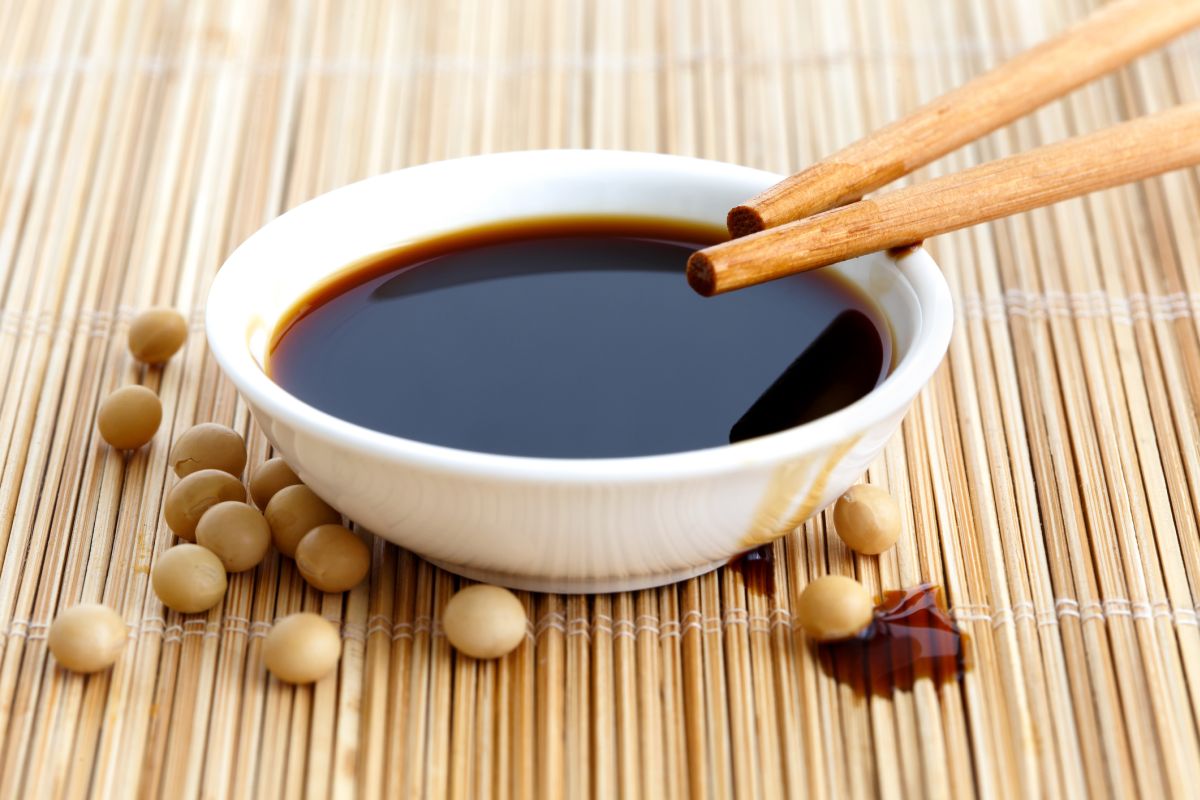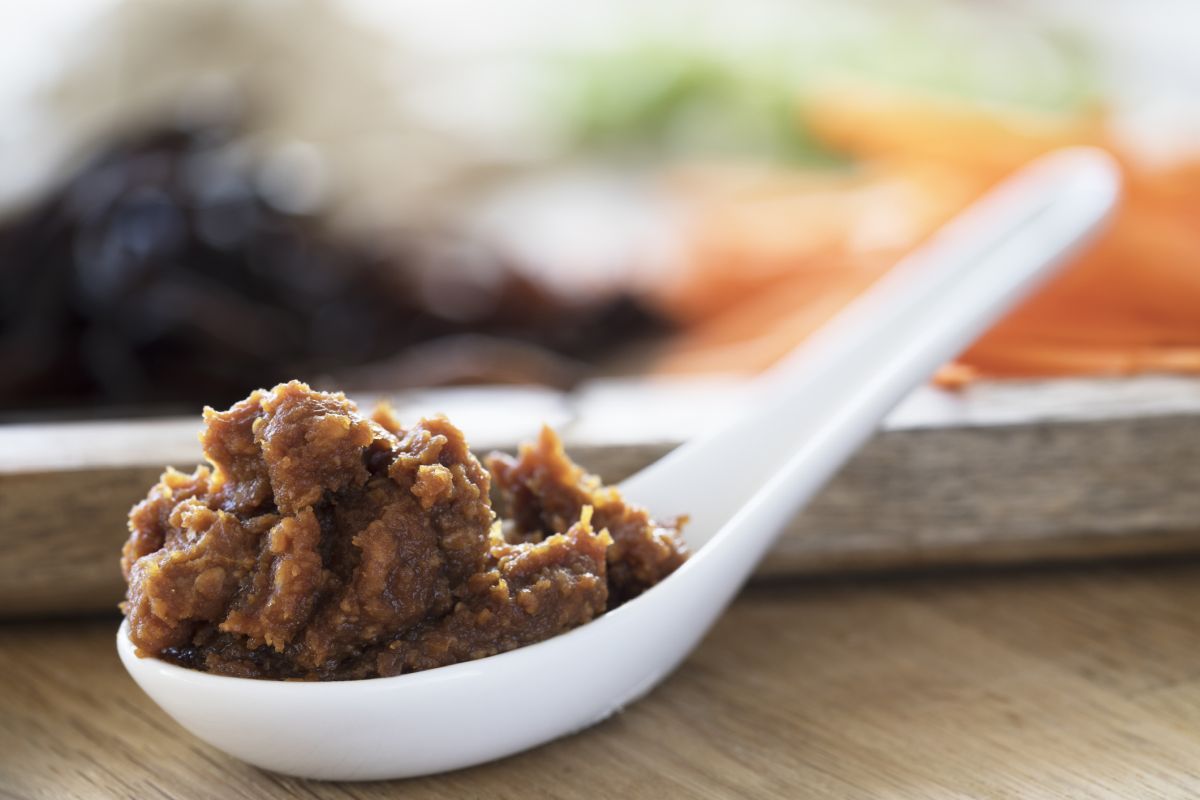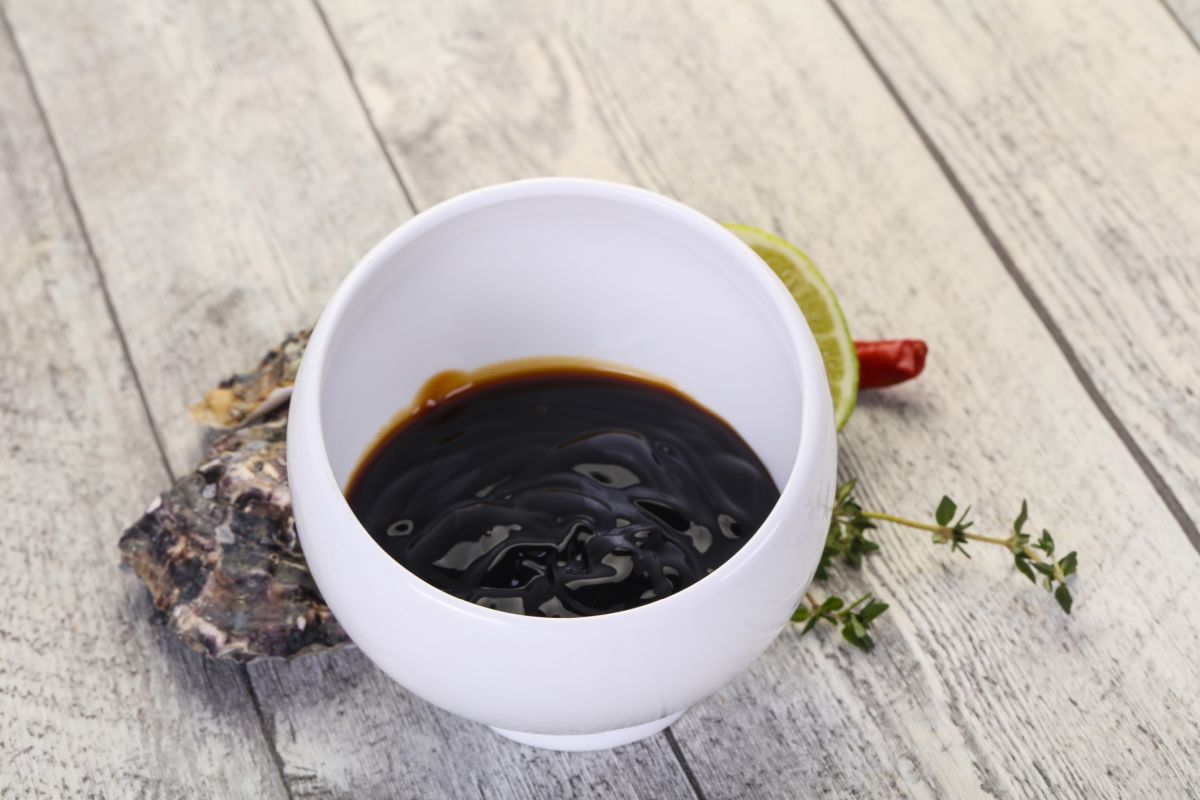If you need a soy sauce substitute due to allergies or simply if you have run out, there are plenty of alternatives that can help you achieve the flavor profile you desire.

What is Soy Sauce?
Soy sauce is a fermented condiment made from soybeans, wheat, salt, and water. It originated in China over 2,500 years ago and has since become a staple ingredient in many Asian cuisines.
Known for its savory umami flavor, soy sauce is often used as a marinade, seasoning, or dipping sauce.
How Soy Sauce is Made
The process of making soy sauce involves four main steps. First, soybeans and wheat are cooked and then mixed with a mold culture known as koji.
Next, the mixture is left to ferment for several days. Then, salt and water are added to the mixture, and it’s left to ferment further.
Finally, the liquid is pressed and filtered to produce the soy sauce we’re familiar with.
Common Uses for Soy Sauce
- As a marinade, usually for meat, poultry, or seafood
- As a base in In stir-fry dishes
- As a seasoning for rice or noodle dishes
- As a dipping sauce for sushi or dumplings
- In salad dressings or sauces
- To add flavor to soups or stews
Why You May Need a Soy Sauce Alternative
- Allergies – soy sauce contains gluten, which is a common allergen.
- Dietary restrictions – You’re following a soy-free diet or trying to reduce your salt intake.
- You’re out of soy sauce and need a substitute
10 Best Soy Sauce Substitute Options for Your Cooking Needs
1. Coconut Aminos
Made from coconut sap and salt, coconut aminos are a popular soy sauce alternative. It has a similar umami flavor and can be used in place of soy sauce in equal amounts. Epicurious shows you how to use this versatile sauce.
2. Tamari
Tamari is a type of soy sauce that’s made without wheat. This alternative has a slightly richer and less salty flavor than traditional soy sauce and can be used in the same way. Masterclass compares the difference in how these two sauces are made.
3. Worcestershire Sauce
Worcestershire sauce is a fermented sauce made from vinegar, molasses, anchovies, and various spices. It has a similar umami flavor and can be used as a soy sauce substitute in some recipes. Foods Guy has a complete overview of Worcestershire sauce.
4. Fish Sauce
If you are unfamiliar with cooking with fish sauce, Siam shows you 10 creative ways to use it. Fish sauce is a pungent condiment made from fermented fish.
It has a salty and savory flavor that’s similar to soy sauce and can be used in small amounts as a substitute.
5. Miso Paste
Miso paste is made from fermented soybeans and has a savory and slightly sweet flavor. It can be used as a seasoning or added to marinades and sauces as a soy sauce substitute. According to Bite My Bun, both are made from the same ingredients, and they compare both.
6. Teriyaki Sauce
It is important to know how to substitute soy sauce with teriyaki sauce. Since teriyaki sauce is a thicker, sweeter sauce, it is more ideal for use in stir-fries or dishes where a sweeter flavor profile is preferred.
7. Shoyu Sauce
If you can get your hands on shoyu sauce, this would be ideal to use in sauces, dressings, or dishes where you would use soy sauce as a base. Masterclass gives you a complete overview of how to use shoyu sauce.
8. Liquid Aminos
Liquid aminos are made from soybeans and water but do not undergo fermentation. Therefore, they have a milder flavor than soy sauce.
It can be used in equal amounts as a soy sauce substitute in recipes that don’t require a strong umami flavor. Betr Health also notes that liquid aminos are gluten-free.
9. Mushroom Sauce
Recipe Tin Eats notes that if you need a replacement for dark soy sauce, mushroom sauce is ideal to use. Mushroom sauce is made from mushrooms, soy sauce, and other seasonings.
It has a similar umami flavor and can be used as a substitute in dishes that call for soy sauce.
10. Oyster Sauce
Oyster sauce is great to use in glazes and marinades, according to Bon Appetit. It is a versatile sauce that can be used to flavor any meat or poultry and has a salty, complex flavor.
Tips for Soy Sauce Substitution
- Taste test – Try a small amount of the soy sauce substitute before adding it to your recipe to make sure it has the desired flavor.
- Adjust quantity – Some soy sauce substitutes may be saltier than others. So adjust the quantity accordingly, as well as the salt in your recipe.
- Mix and match – If one single ingredient’s flavor isn’t enough, combine two or more soy sauce substitutes to achieve the desired flavor.
- Consider color – Some soy sauce substitutes may alter the color of your dish. Therefore, you should keep that in mind when selecting a substitute.
- Read labels – Make sure to check the ingredient list to ensure that the soy sauce substitute is suitable for your dietary needs.


Leave a Reply